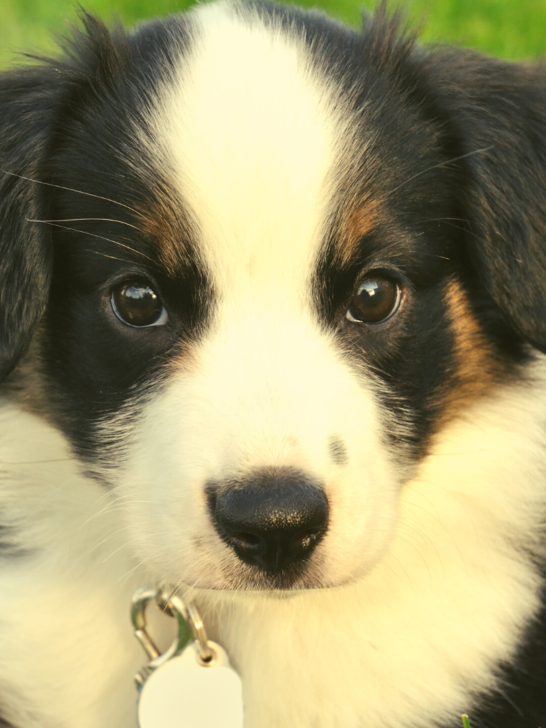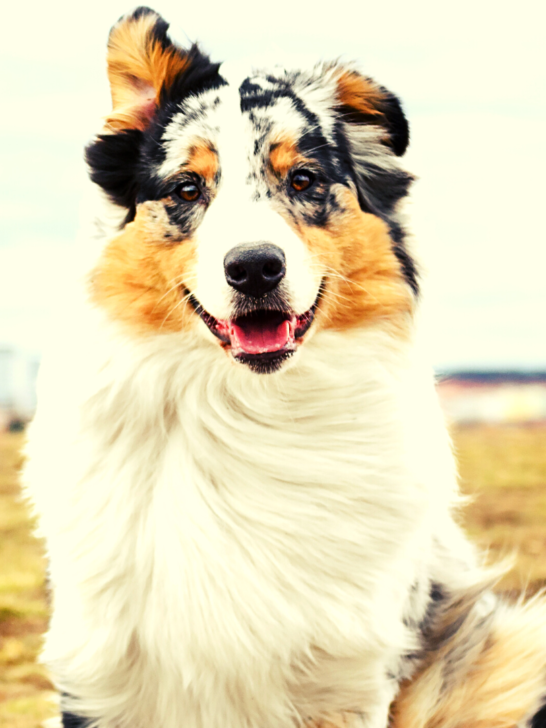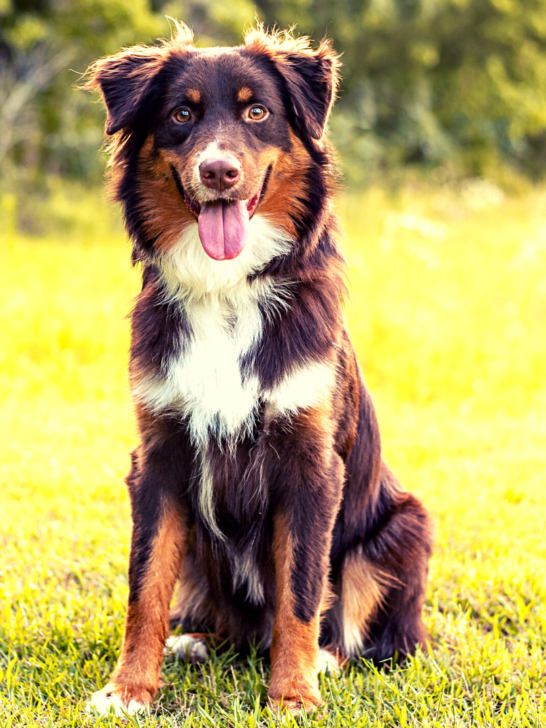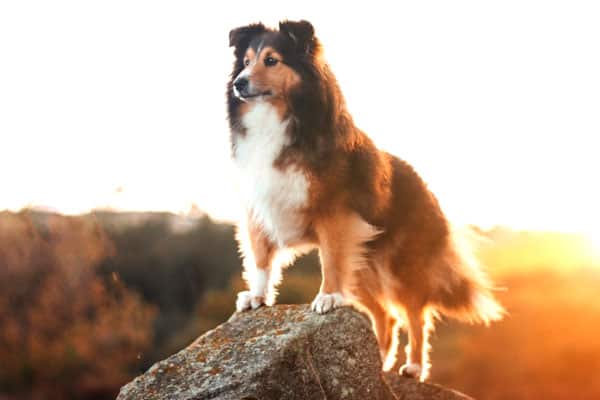Australian Shepherd Pitbull Mix: A Comprehensive Guide
Australian Shepherd Pitbull mix dogs are a unique mixed breed between an Australian Shepherd and a Pitbull. Exhibiting characteristics from both parent breeds, these dogs are energetic, intelligent, affectionate, and incredibly loyal.
Often called Aussie Pits or Pitbull Australian Shepherds, these dogs are a designer breed that can often be found at rescue shelters if you are lucky!
If you do manage to find one of these gorgeous pups, we highly recommend adopting one. It’s not easy to find a perfect cuddle companion and a guard dog in one animal!
In this guide, we will explain everything you need to know about Aussie Pits to help you understand this unique designer breed if you are looking to own one.
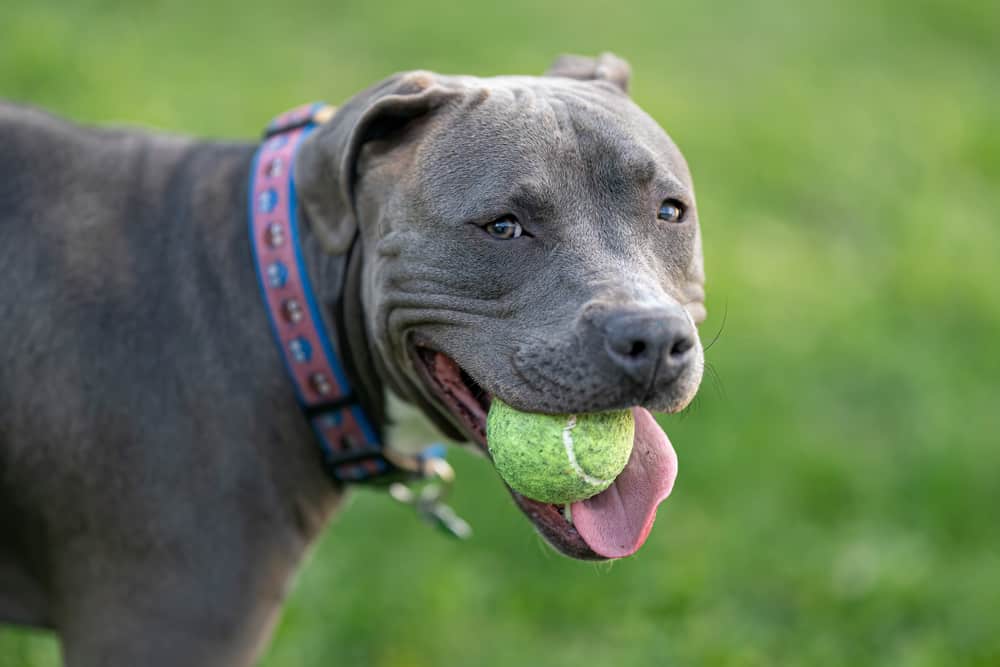
Australian Shepherd Pitbull Mix History
Before we go into this guide, let’s have a look at the history of an Aussie Pit.
Designer breeders in North America began to intentionally breed Australian Shepherds with Pitbulls in the 1990s.
The aim of this breeding was to create a dog that exhibited characteristics from both breeds – including intelligence, affection, obedience, and loyalty.
As they are a fairly new mixed breed, there isn’t much history about Aussie Shepherds. Here’s a brief history of the two breeds that make this dog!
Australian Shepherd History
Australian Shepherds were bred in California in the 19th century as herding dogs.
Collies from Australia and New Zealand were one of the herding dogs used to breed Australian Shepherds, which then created an intelligent, protective breed that is still used for herding a flock nowadays.
These dogs were used solely as herding dogs for a century in California, until the 20th century when their obedience was recognized outside herding responsibilities.
Rodeo performer Jay Lister trained an Australian Shepherd to perform tricks at rodeos, which impressed the crowd enough to form a club to encourage the United Kennel Club to recognize the breed.
The UKC recognized the breed in 1979, and the AKC (American Kennel Club) did the same in the 1990s.
To this day, Australian Shepherds are still used for herding purposes, but they are also extremely popular companions and candidates for dog shows.
Pitbull History
Pitbulls were originally bred from Old English Bulldogs in England in the 1800s. Bull baiting was a cruel yet popular sport during this time, wherein two Bulldogs had to fight a bull for hours until the bull collapsed from exhaustion or injury.
These matches were said to be one of the few sources of entertainment for the working class.
This cruel event was prohibited in 1835 by the Cruelty to Animals Act. However, the public made the dogs fight with rats instead.
As rats were faster than bulls and harder to catch, Bulldogs were bred with nimble Terriers, which created the Pitbull Terrier.
While Pitbull Terriers were first bred to catch and fight rats, people began to breed the dogs when they realized their intelligence and affection towards humans.
Pitbull Terriers came to America before the Civil War by British immigrants who came with their dogs. The dogs were hence known as the “American” Pitbull Terrier, as Americans then bred them for multiple purposes.
American Pitbull Terriers worked in herding and guarding livestock, protecting households, catching hogs, and helping on hunts. Their nurturing nature gave them the nickname of “Nanny dogs” due to their affection for children.
They soon became regular and loved dogs across the country.
However, dog fighting re-emerged in the 1980s, which gave the dogs an unfair association with aggression and thug-like behavior.
This negative association is still prevalent in microaggressions about the dog, but they are starting to get a fairer and deserved representation.
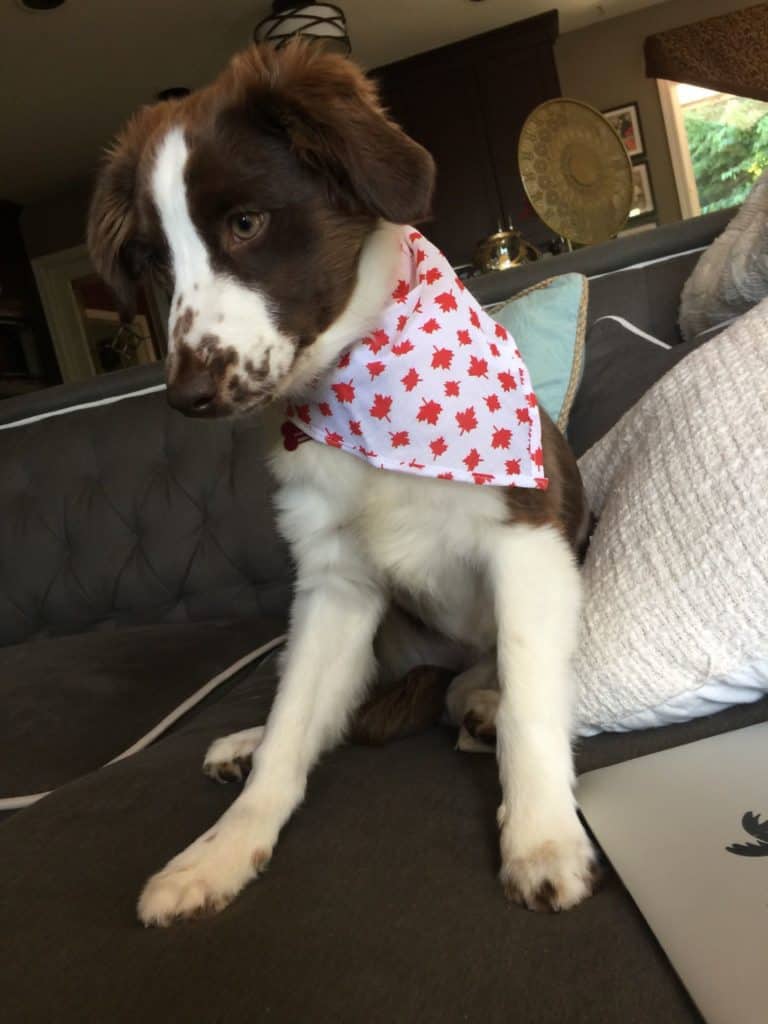
Australian Shepherd Pitbull Mix Appearance
Aussie Pits are medium-large breeds that don’t all look the same. As they are a fairly recent designer breed, each Aussie Pit will look different from one another.
They will be slightly shorter and feature a stocky build compared to a regular Australian Shepherd, and they won’t often be as fluffy. This means that their shedding is minimum.
Their coats will vary depending on their parent breeds. As there are multiple Australian Shepherd and Pitbull coat colors, the results will vary for each litter. Aussie Pits will either be cream, red merle, blue merle, or black.
Like their coat, Aussie Pits will vary in size depending on their parents. On average, most Australian Shepherd Pitbull Mix dogs will weigh between 30 and 85 pounds and can grow to 23 inches tall at the shoulder.
Australian Shepherd Pitbull Mix Temperament and Behavior
As with most mixed breed dogs, Aussie Pits exhibit characteristics from both parent breeds. They just so happen to be the best characteristics you can find in a dog! These dogs are loyal, affectionate, clever, easy to train, and highly alert.
This high alert level means that they are excellent guard dogs, as they will bark at suspicious intruders such as thieves.
These dogs are highly energetic, which means they should only go to homes that can cope with the exercise the dog requires. If they do not get enough exercise or if they are bored for too long, Aussie Pits have a habit of becoming destructive.
If they don’t get their walkies or if they aren’t being played with (especially as a puppy), they will chew everything in sight. Fortunately, as their intelligence makes them easy to train, these habits can be prevented in the early stages.
When it comes to other dogs, Aussie Pits are a bit unpredictable. Some might be fine with another dog companion, while others might have more of a spunky nature.
It is important to socialize your dog with other humans and animals from a young age to get an idea of whether it can live with another dog.
They are incredibly protective, after all, so they might become possessive over their human(s).
Australian Shepherd Pitbull Mix Health Risks
These dogs are predisposed to any health risks that Australian Shepherds and Pitbulls will face. As they are a medium-large mixed breed dogs, they will also share potential health problems with other breeds of the same size.
Aussie Pit health risks include:
- Hip dysplasia
- Cataracts
- Allergies
- Epilepsy
- Joint pain
- Cerebellar ataxia (genetic brain disorder)
- Collie eye anomaly
As with any dog, you should take your Aussie Pit to the vet regularly to keep on top of their health.
Caring for an Australian Shepherd Pitbull Mix
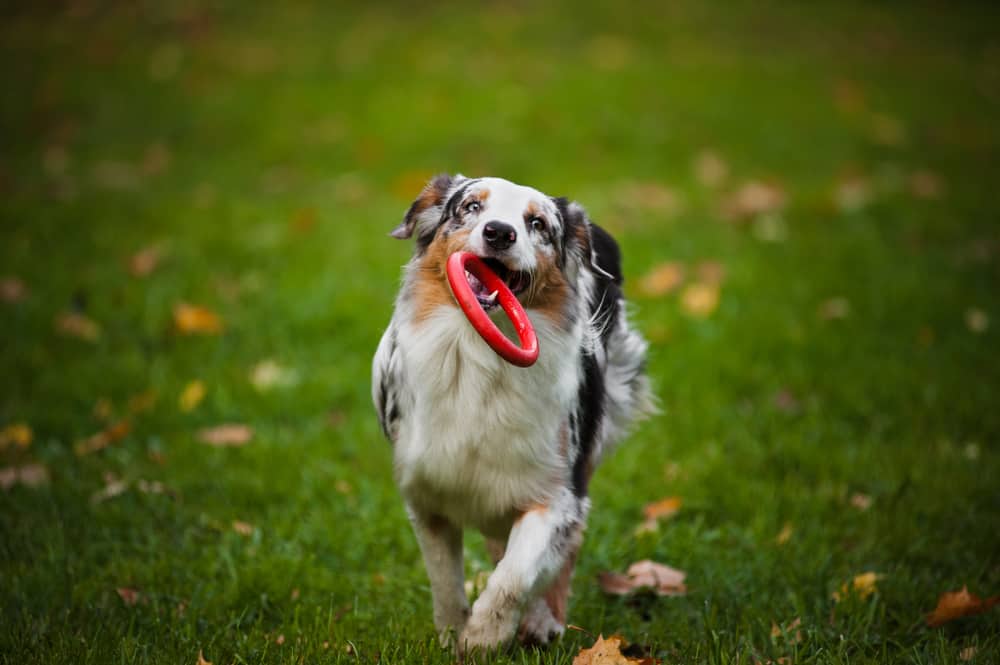
Like most medium-large breeds, it’s not easy to care for an Aussie Pit. However, the results are definitely worth it!
Exercise
These dogs are highly energetic, so they should have at least one big walk lasting an hour daily. This can be split into two half-hour walks if needed.
As well as this, your dog will need to be distracted during the day with toys and playtime to prevent them from destructive boredom. It helps if you have a backyard because this means that they can run around whenever they like.
Diet
Aussie Pits are highly energetic and prone to obesity if they don’t receive adequate levels of exercise. This means you need to find a diet that will prevent them from gaining weight whilst giving them enough energy to support their muscles.
A high-protein and low-carb diet are essential for an Australian Shepherd Pitbull Mix.
Foods that include protein like chicken, beef, turkey, egg, or salmon are ideal – just make sure to avoid dog foods that include carbohydrates such as potatoes. Carbs are unnecessary in dog food, as they only act as fillers that promote weight gain.
Dog food should also include antioxidants such as blueberries that help to strengthen the immune system. Essential fatty acids from fish provide a great source of omega-3 for healthy skin and coat.
Kibble is a great choice for dogs as the hardened biscuits work to prevent plaque or tartar build-up. Wet food or raw food is great for dogs who require even more energy, but it’s mostly up to you how you want to feed your dog.
As with most dogs, Aussie Pits love to eat food. Problem is, if you leave their food out for them to nibble throughout the day, they will gain weight fast. Instead, create a routine where you feed them twice a day.
Their dietary needs will change as they age from a puppy to maturity, so make sure to follow your vet’s advice on how much to feed your dog.
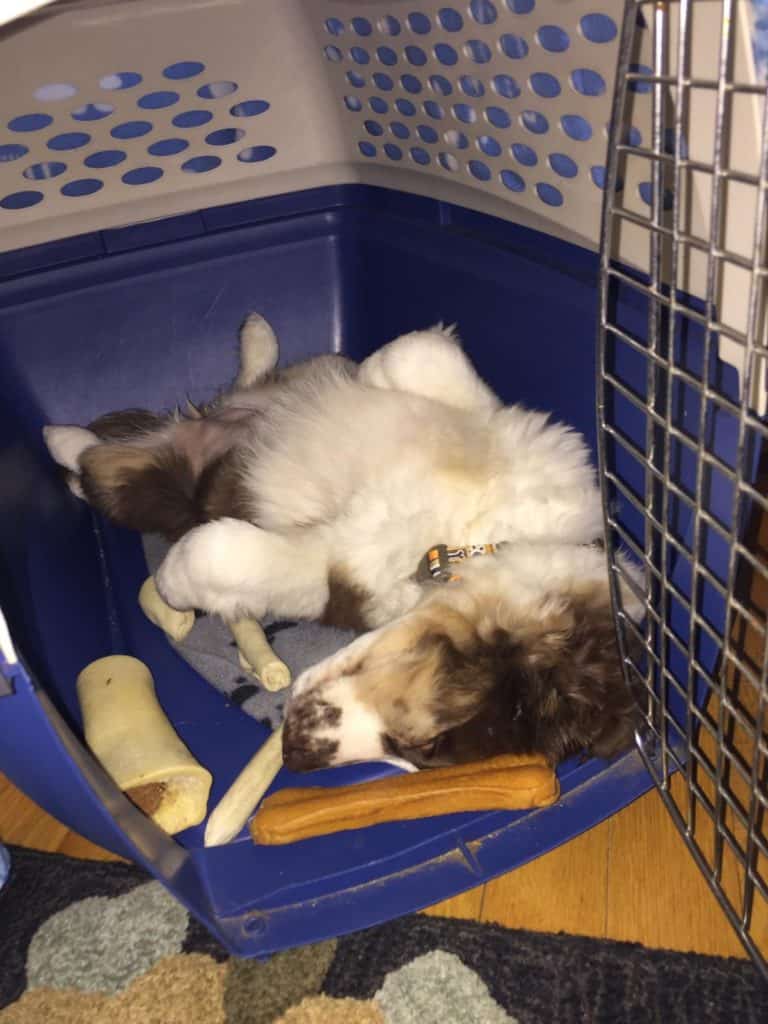
General care
Australian Shepherd Pitbull Mixes love to run around fields, which means that they could return home with an abundance of goodies in their coat. Make sure to check their ears regularly for pests and debris that could cause an infection.
While their coats are shorter than a standard Australian Shepherd, you should brush their hair once a week. This will prevent knotting and should get rid of grass seeds or insects that could irritate their skin.
As their coats aren’t thick, your Aussie Pit might need a coat or jumper in winter.
Similarly, you should apply dog sunscreen to their ears and nose to prevent burning. Their poor skin isn’t designed for extreme weather!
Aussie Pit’s nails should be trimmed regularly by yourself or a groomer. We recommend taking them on the occasional road walk to help their nails naturally grind down against the hard ground.
You will also need to brush your dog’s teeth now and then. This isn’t so much the case if your dog eats kibble, but if it’s on a wet food diet, this is essential. Brushing their teeth will prevent gum rot, infection, and tooth loss.
Aussie Pits are prone to eye issues, keep an eye on unusual discharge or redness and take your dog to the vet immediately.
Australian Shepherd Pitbull Mix and Children and Animals
Aussie Pits love children. After all, they come from Pitbulls who are affectionately nicknamed “Nanny dogs”. They have a wonderful nurturing personality and love to cuddle alongside the humans they adore.
Plus, their extreme loyalty means they will be very protective of children against other dogs and humans.
The only problem is that Aussie Pits are fairly large and energetic dogs. This means that children need to be aware of this, and boundaries should be put in place to prevent an accident from happening.
This should be the case for every dog in a household with children.
For example, when the dog is eating, the children should never try to take the food away from them. Healthy boundaries will create a healthy and safe relationship.
With other animals, Aussie Pits can exist alongside other pets if they have been socialized correctly. They aren’t aggressive by nature, so they won’t immediately attack other animals.
Still, make sure to socialize them with other dogs and household pets from a young age. As they take up a lot of time from being so loving and energetic, they are often recommended to live as the sole pet of the house.
When they are older and less energetic, they can live alongside another dog.
Where to get an Australian Shepherd Pitbull Mix
Though they are a designer breed, Aussie Pits will pop up in rescue shelters if you’re lucky! This usually happens when a family can no longer commit to the exercise and energy requirements of the dogs.
Adopting a dog is always the best way to welcome a new pet into your home. Of course, you can buy a puppy from a seller, but why not give a rescue dog a fresh start and a new chance?
Aussie Pits are exceptionally intelligent and trainable, which means they can be trained even as an adult.
When looking to buy an Aussie Pit, make sure to only buy from licensed and reputable sellers. You have the right to ask for every document possible – from medical documents of the parents to permits and licenses from the sellers.
The last thing you want to do is to buy a dog that comes with a series of underlying health issues that you can’t commit to caring for.
Plus, you don’t want to contribute to the designer breed backyard seller trade!


























